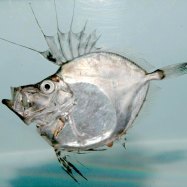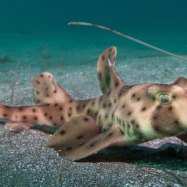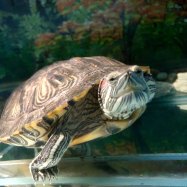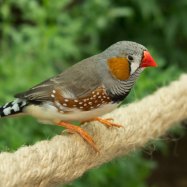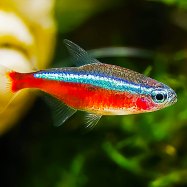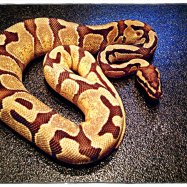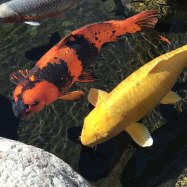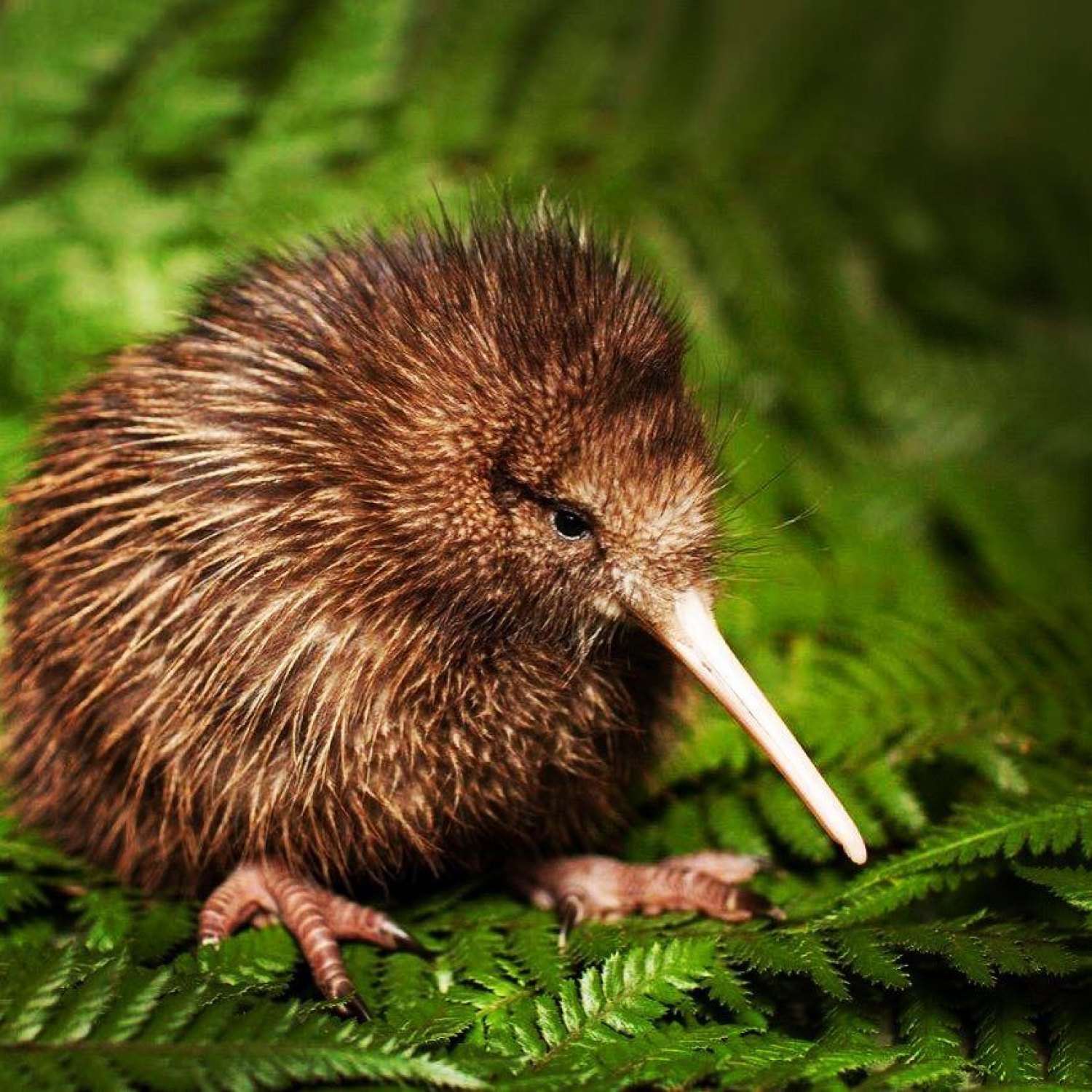
Kiwi
40 - 45 cm
The adorable Kiwi birds can only be found in New Zealand's North and South Islands. These flightless birds, with their small round bodies and short legs, belong to the Apterygidae family. They measure around 40-45 cm and are a must-see for any nature lover!
Animal Details Summary:
Common Name: Kiwi
Kingdom: Animalia
Habitat: Forests, shrublands, and grasslands
The Fascinating World of the Kiwi: New Zealand's Native Flightless Bird
New Zealand, a country known for its breathtaking landscapes and unique wildlife, is home to a one-of-a-kind bird – the kiwi. With its distinct appearance and behavior, the kiwi has captured the hearts of people all over the world and has become a symbol of New Zealand. In this article, we will dive into the world of the kiwi, exploring its characteristics, habitat, behavior, and more.Meet the Kiwi
The kiwi, scientific name Apteryx, is a flightless bird native to New Zealand Kiwi. This unique bird is not only the national symbol of New Zealand, but it is also the only bird in the world that has nostrils at the end of its beak. This interesting feature allows the kiwi to forage for food efficiently, even in the dark.Kiwi is a small bird, measuring around 40 to 45 cm in length, with a small, round body and short legs. It has a long, curved beak and fluffy, hair-like feathers that give it a shaggy appearance. The color of kiwis varies from brown to gray, with a few of its species having white or golden stripes on their feathers.
Classification of the Kiwi
The kiwi belongs to the Kingdom Animalia, Phylum Chordata, Class Aves, and Order Apterygiformes. It is also the only living member of the family Apterygidae, making it a distinct and unique member of the bird family.Native Habitat and Geographical Distribution
The kiwi is found only in New Zealand, making it a truly exclusive species. It can be found in various habitats, including forests, shrublands, and grasslands Kaluga Sturgeon. However, they are mostly found in areas with dense vegetation, as they prefer to hide and forage on the ground.Within New Zealand, the kiwi is found on both the North Island and South Island. However, the distribution of different kiwi species varies. For example, the brown kiwi, the most common species, can be found in both the North and South Island, while the Great Spotted Kiwi is found only on the South Island.
Nocturnal Ground Forager
One of the most distinctive characteristics of the kiwi is its feeding behavior. Kiwis are nocturnal ground foragers, meaning they search for food mainly at night and on the ground. This foraging behavior is necessary for their survival, as their long beak and strong sense of smell make them excellent hunters of invertebrates, such as worms, insects, and spiders.Interestingly, the kiwi does not have a gallbladder, which means it cannot digest large amounts of fat. As a result, it has adapted to a diet of low-fat foods, such as insects and fruit. They also have a unique way of eating – they use their long beak to push their prey into the ground, where it is broken into smaller pieces for easier consumption.
Conservation Status
Despite its unique characteristics and importance as a national symbol, the kiwi is facing threats to its survival. The main threats to kiwi populations are habitat loss and predation by introduced species, such as stoats, ferrets, and dogs.To combat these threats, the New Zealand government has implemented various conservation efforts to protect and increase kiwi populations. These efforts include predator control, captive breeding, and habitat restoration. As a result, some kiwi species, such as the brown kiwi, have seen a steady increase in numbers. However, there is still more work to be done to ensure the survival of all kiwi species.
The Kiwi in Culture and Tourism
The kiwi is deeply rooted in New Zealand's culture and history. It has been an important symbol for the Maori people, the indigenous people of New Zealand, who have several myths and legends surrounding the bird. The kiwi has also been featured in various New Zealand coins, stamps, and company logos, showcasing its significance in the country's identity.Moreover, the kiwi has become a popular tourist attraction in New Zealand. Many tourists flock to the country to catch a glimpse of this unique bird in its natural habitat, and several wildlife sanctuaries offer guided tours and opportunities to see kiwis up close. In recent years, there has also been a rise in eco-tourism initiatives that focus on conservation and protection of the kiwi.
Why is the Kiwi Important?
Aside from being a national symbol and a popular tourist attraction, the kiwi plays a crucial role in its ecosystem. As a ground forager, it helps control insect populations, thereby contributing to the health of New Zealand's forests and grasslands. Additionally, the kiwi is a keystone species, which means it plays a vital role in maintaining the balance of its ecosystem.Moreover, the kiwi is also important in terms of its genetic makeup. Its genome has unique features that could have potential applications in the medical field, such as developing new antibiotics. Therefore, protecting the kiwi also means protecting the genetic biodiversity of New Zealand.
The Future of the Kiwi
The future of the kiwi is still uncertain, as it continues to face threats from predators and habitat loss. However, with increased awareness and conservation efforts, there is hope for the survival of this remarkable bird. The New Zealand government and various conservation organizations are working towards preserving and protecting the kiwi, ensuring that it will continue to be a part of New Zealand's natural heritage for generations to come.In conclusion, the kiwi is more than just a flightless bird – it is a symbol of New Zealand's unique wildlife and rich culture. Its distinctive characteristics, feeding behavior, and importance in its ecosystem make it a fascinating creature that has captured the hearts of many. As its conservation efforts continue, we can hope to see the kiwi thriving in the wild for many years to come.

Kiwi
Animal Details Kiwi - Scientific Name: Apteryx
- Category: Animals K
- Scientific Name: Apteryx
- Common Name: Kiwi
- Kingdom: Animalia
- Phylum: Chordata
- Class: Aves
- Order: Apterygiformes
- Family: Apterygidae
- Habitat: Forests, shrublands, and grasslands
- Feeding Method: Nocturnal ground forager
- Geographical Distribution: New Zealand
- Country of Origin: New Zealand
- Location: North Island and South Island
- Animal Coloration: Varies from brown to gray
- Body Shape: Small, round body with short legs
- Length: 40 - 45 cm
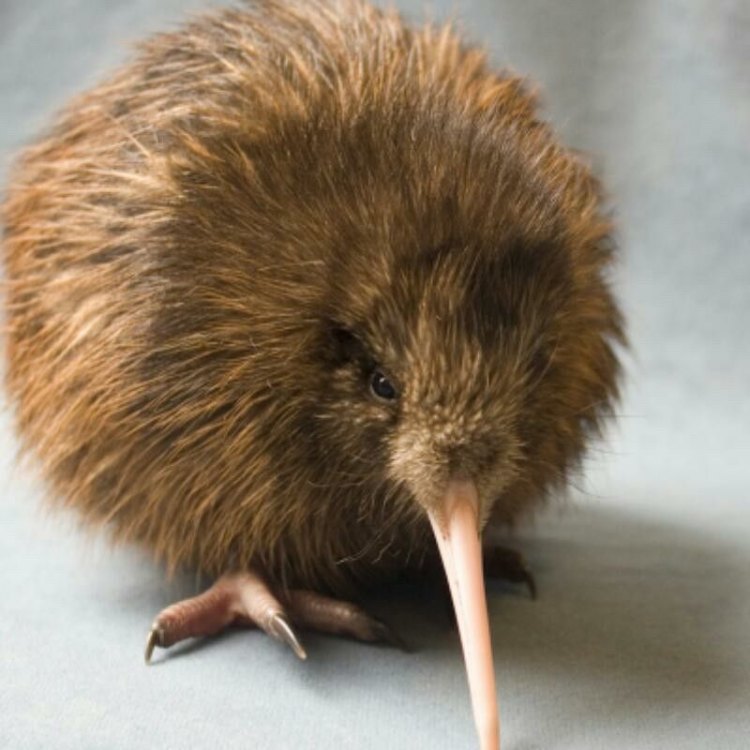
Kiwi
- Adult Size: Similar to a chicken
- Average Lifespan: Up to 40 years
- Reproduction: Sexual
- Reproductive Behavior: Monogamous
- Sound or Call: Low, growling call
- Migration Pattern: Non-migratory
- Social Groups: Solitary
- Behavior: Nocturnal, secretive
- Threats: Habitat loss, introduced predators
- Conservation Status: Endangered
- Impact on Ecosystem: Seed dispersal
- Human Use: National symbol of New Zealand, tourism
- Distinctive Features: Flightless, long beak, small wings
- Interesting Facts: Only bird with nostrils at the tip of the beak, lays the largest egg relative to its body size of any bird species
- Predator: Introduced mammals such as stoats, cats, and dogs
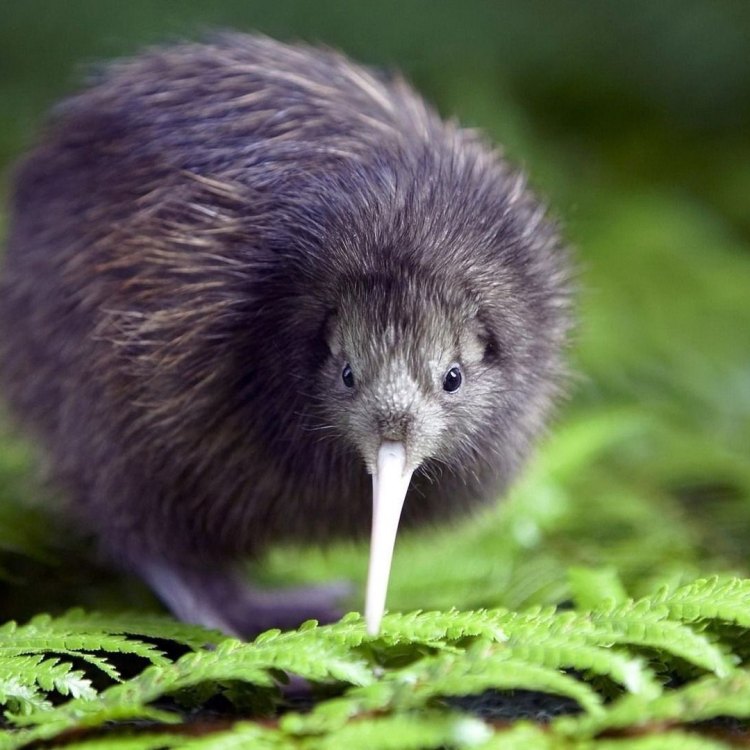
Apteryx
The Unique Flightless Bird of New Zealand: The Kiwi
New Zealand is a country known for its stunning natural landscapes, diverse wildlife, and rich cultural heritage. Among the many unique species found on this island nation, one stands out for its distinctive features and fascinating behavior – the kiwi. This flightless bird is not only a national symbol of New Zealand but also a key player in the country's ecosystem and a major draw for tourists. In this article, we will dive into the world of kiwis, exploring their size, lifespan, behavior, threats, and conservation status, as well as their interesting facts and impact on the ecosystem PeaceOfAnimals.Com.The Size and Lifespan of a Kiwi
At first glance, a kiwi may remind you of a chicken due to its size and shape. The adult size of a kiwi is comparable to that of a chicken, reaching up to 25 inches in height and weighing around 7 pounds. However, unlike chickens, kiwis have small, rudimentary wings that are not capable of flight. This is a distinguishing feature of kiwis, and one of the reasons for their classification as flightless birds.Another interesting fact about kiwi birds is their long lifespan. On average, a kiwi can live up to 40 years, with some reaching a ripe old age of 50. This is quite impressive for a bird species, as most birds have a much shorter lifespan.
Reproduction and Behavior of Kiwis
Kiwis are sexually reproducing birds, and their reproductive behavior is quite intriguing. They are monogamous, meaning they mate with only one partner for life Klipspringer. This is another reason why kiwis are a significant part of the cultural heritage of New Zealand, as they are seen as a symbol of enduring love and loyalty.The kiwis' reproductive behavior is also notable for its uniqueness. Unlike most birds, they have a thick shell and a high yolk-to-albumen ratio, which allows them to produce large eggs relative to their body size. In fact, kiwis lay the largest eggs of any bird species in proportion to their body size. This adaptation is necessary for kiwis as they have a long incubation period of about 70-80 days, and the female kiwi must carry the egg in her body during this time.
Aside from their reproductive behavior, kiwis are also known for their nocturnal and secretive nature. They are most active at night, foraging for food in the darkness. This behavior is an adaptation to their habitat, as being active at night allows them to avoid predators and competition from other bird species. Kiwis are solitary animals, and they tend to avoid other kiwis except during the breeding season.
The Low, Growling Call of Kiwis
Another unique aspect of kiwi birds is their sound or call. Most birds have a distinct chirp or song, but kiwis have a low, growling call that can sound like the noise of a distant engine. This call is used for communication between mates and also serves as a warning for potential predators. Despite their low call, kiwis have a keen sense of hearing, which helps them navigate through their environment and find food.The Non-Migratory Solitary Social Groups of Kiwis
Unlike many bird species, kiwis are non-migratory, meaning they do not travel long distances to find food or suitable breeding grounds. They can be found throughout New Zealand, but each individual kiwi has its own territory, which it defends fiercely from other kiwis. This territorial behavior is another reason for the kiwi's solitary social groups.Threats to Kiwis and Their Conservation Status
Despite their unique features and behaviors, kiwi birds face numerous threats to their survival and are classified as endangered. The biggest threat to kiwis is habitat loss, which has been caused by human activities such as deforestation, land conversion for agriculture, and urbanization. These activities have fragmented their natural habitat, making it harder for kiwis to find food and suitable breeding grounds.Another major threat to kiwis is the introduction of non-native predators, such as stoats, cats, and dogs, to New Zealand. These predators have no natural predators in the country, making them a significant threat to native species such as kiwis. The stoat, in particular, has been responsible for a significant decline in the kiwi population.
To address these threats, there have been various conservation efforts put in place to protect kiwis and their habitats. These include predator control programs, habitat restoration, and raising awareness among the public about the importance of preserving these flightless birds. There are also initiatives to breed kiwis in captivity and release them into predator-free areas in an effort to increase their numbers.
The Impact of Kiwis on the Ecosystem
Kiwis play a crucial role in the ecosystem of New Zealand. They are known as "ecosystem engineers" as they provide essential services that help maintain the balance of their habitat. One of their main roles is seed dispersal. As they forage for food, kiwis consume a variety of fruits and berries, and the seeds from these fruits pass through their digestive system and are dispersed throughout their territory. This process helps with the regeneration of native plant species, making kiwis important contributors to the biodiversity of New Zealand.The Human Use of Kiwis and Their Interesting Facts
Kiwis hold a special place in the hearts of New Zealanders, who have made them a national symbol. They are often featured in art, literature, and sports, and the image of a kiwi can be found on New Zealand's currency and stamps. Kiwis are also a major draw for tourists, who come to see these unique birds and learn more about their fascinating behavior and history.Apart from their cultural and touristic significance, kiwis have many interesting facts that make them a source of wonder. One such fact is that they are the only bird species with nostrils at the tip of their beak. This makes them especially adapted to their nocturnal lifestyle, as they can use their sense of smell to find food in the dark.
Additionally, kiwi eggs are often referred to as "half their body weight," as they can weigh up to a whopping 20% of the female kiwi's body weight. This is essential for the survival of kiwi chicks, as they must have enough nutrients to sustain them during the long incubation period and after hatching.
In Conclusion
Kiwis are a fascinating and unique species found only in New Zealand. Their size, lifespan, reproductive behavior, territorial and solitary nature make them stand out among other bird species. However, their survival is threatened by human activities and the introduction of non-native predators. Efforts to conserve kiwis and their habitats are ongoing, as they play a crucial role in maintaining the balance of New Zealand's ecosystem. Kiwis are not only a symbol of national pride but also a source of amazement for many people, who are drawn in by their distinctive features and interesting facts.
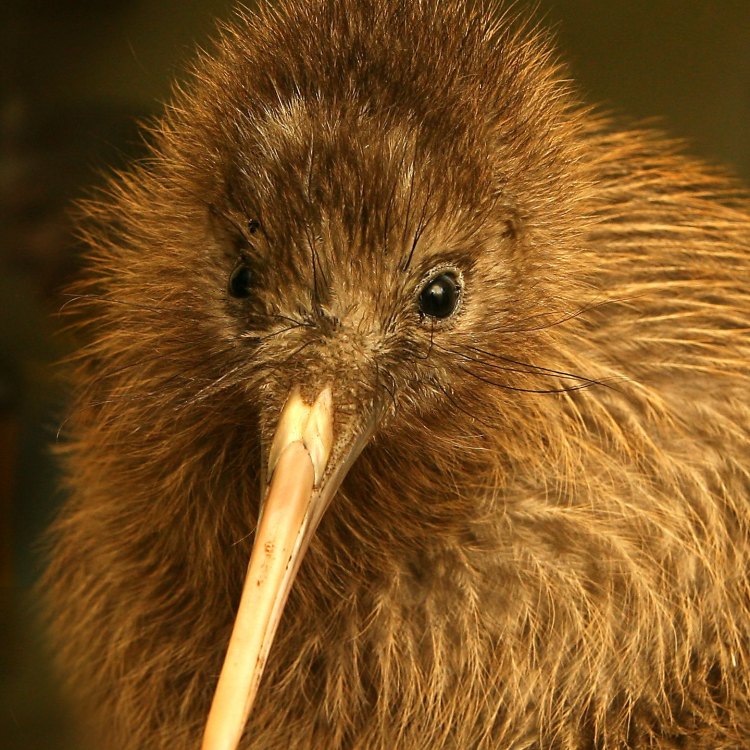
The Fascinating World of the Kiwi: New Zealand's Native Flightless Bird
Disclaimer: The content provided is for informational purposes only. We cannot guarantee the accuracy of the information on this page 100%. All information provided here may change without prior notice.

